
The Women's Euros 2025 began in Switzerland on Wednesday, 2nd July, with extreme heat warnings in place.
By 3rd July, Meteo Swiss stated, ‘After five days of intense heat, the pressure is dropping, and so is the temperature.’ There have been thunderstorms, with warnings for the heat and the storms earlier in the week. In the far southwest, Geneva had peaked at 35.6°C on Monday, June 30th. Resorts around Lake Geneva suffered a succession of tropical nights (minimums above or equal to 20°C) between June 29th and July 3rd. June 2025 was the second warmest June in Switzerland since records began in 1864, only beaten by the fierce European summer of 2003.
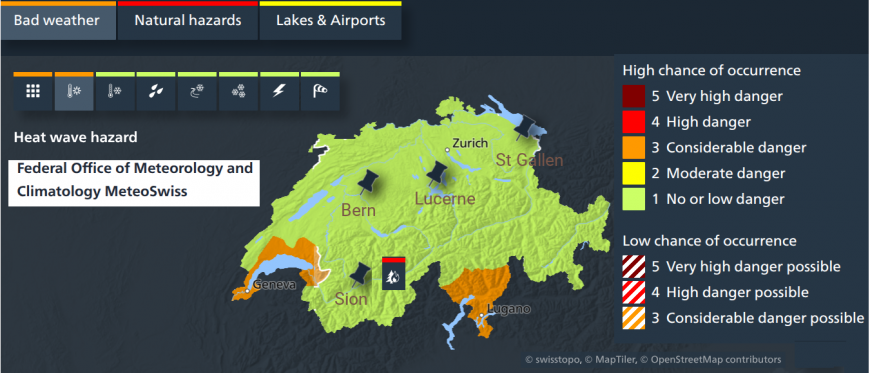
As a result of the midweek heat, security measures were relaxed by UEFA for the opening matches, allowing fans to bring in reusable water bottles on the first two days. They were encouraging spectators to make use of shaded areas and making free sunscreen available around the stadium for the fans. Even as the Switzerland v Norway match ended, temperatures were still at 28C in the evening.
England manager Sarina Wiegman is confident her players will be well prepared as they begin the defence of their Women's European Championship title against France on Saturday 5th in Zurich. Wiegman mentioned the recent heat in England had helped preparations. The women’s England team have been wearing ice vests and towels, sitting in ice baths and drinking ice slushies. They also use cryotherapy, which involves applying extremely cold temperatures either locally with ice packs or cooling sprays.
"(We also) make sure we are hydrated. Of course, taking enough rest," Wiegman said.
Good advice for anyone in a heatwave, but vital for those having to run about. For the players on the pitch, there can be extra cooling breaks, one per half, depending on the conditions. These are implemented, one per half if the temperature exceeds 32 Celsius at the end of the team warmups. If the temperature falls below the threshold, drink breaks would be at the discretion of the referee.
Men's Club World Cup
Clashing with the Women’s Euros in Switzerland is the men’s Club World Cup taking place in the US. This is held the year before the next men’s World Cup, which will be in the USA, Canada and Mexico in 2026.
Players at the Club World Cup have already seen the impact of heatwaves this summer at venues across the US. Chelsea and Manchester City are the two British teams included in the tournament. As usual with large events, there are logistical timetabling difficulties and worldwide television audiences to please, perhaps more importantly in the US, the domestic audience too. Games that start at noon or mid-afternoon would catch prime evening viewing in Europe, but are very hot for the players. If more games are scheduled in the evening when the worst of the day’s heat has passed, many European fans would be asleep, which is no good for broadcasters and sponsors.
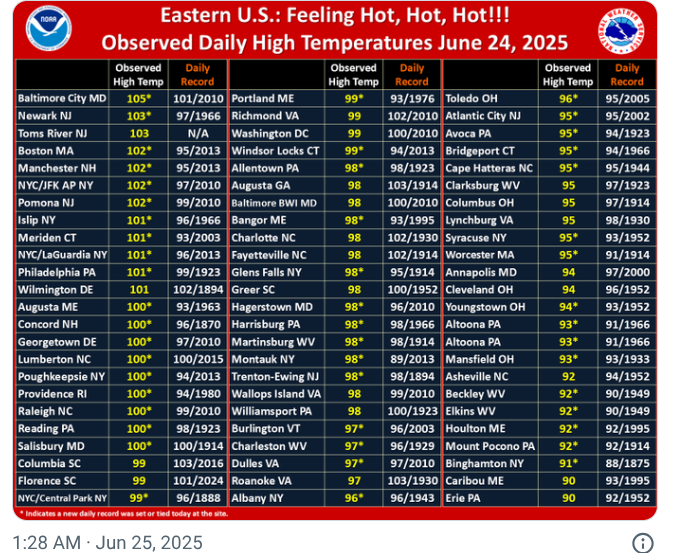
In late June, Chelsea decided to cut short their training before their match at Subaru Park, Philadelphia as temperatures reached 36C in scorching heat. Local authorities had urged people to avoid strenuous activity as the Feels Like temperature reached 41C (106F). The match on Wednesday 25th June was at 9pm local time, so the best timing on offer as they played ES Tunis. Chelsea did manage to secure a place in the Club World Cup knockout stage, even with the intense heat. There are more teams playing this year, which further restricts any changes in the fixture list. Two European teams played on the opening Sunday in an uncovered stadium with complaints about the lack of shade and access to water.
This tournament is being seen as a practice run for the World Cup next year. Only one of the 12 stadiums has a roof that can be closed, across the United States, being used in the Club World Cup. The Mercedes-Benz Stadium in Atlanta. Luckily for Manchester City, it was closed due to the high temperatures against Al Ain from the UAE.
Harry Kane (playing for Bayern Munich) said: “I’m not too bothered by the heat. In football, you have to adapt. For me and the other England boys here, this is really useful. We’ll be more used to what we’ll face next year [in the World Cup], and I’m sure the conditions will be quite similar.”
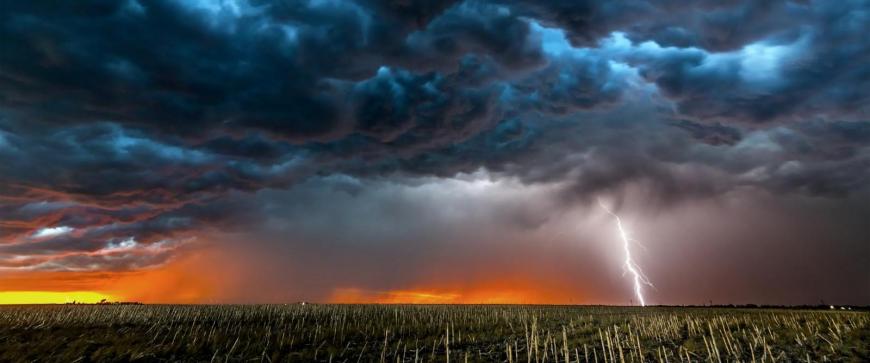
It has not only been the intense heat causing issues, but there have also been interruptions due to electrical storms. This included Chelsea, whose game against Benfica in North Carolina was stopped with 5 minutes to go.
“For 85 minutes we were in control of the game,” Manager Maresca said in his post-match press conference. “After the break, the game changed completely. For me, it’s not football. It’s already seven, eight, nine games that they suspended…that means that probably [this] is not the right place to do this competition.”
As our climate warms, there is a projected increase in lightning strikes in the United States. The number of lightning strikes could increase by about 12% for every degree of rise in global average air temperature. Science
As always with these worldwide competitions, some nations are more comfortable and used to the heat. And yet, that heat is increasing, as is the demand on elite footballing teams in a busy season. FIFPro felt that football officials weren't responsive when it asked for kick-off times to be moved from the fierce afternoon heat in the US for the first (larger) 32-team Club World Cup.
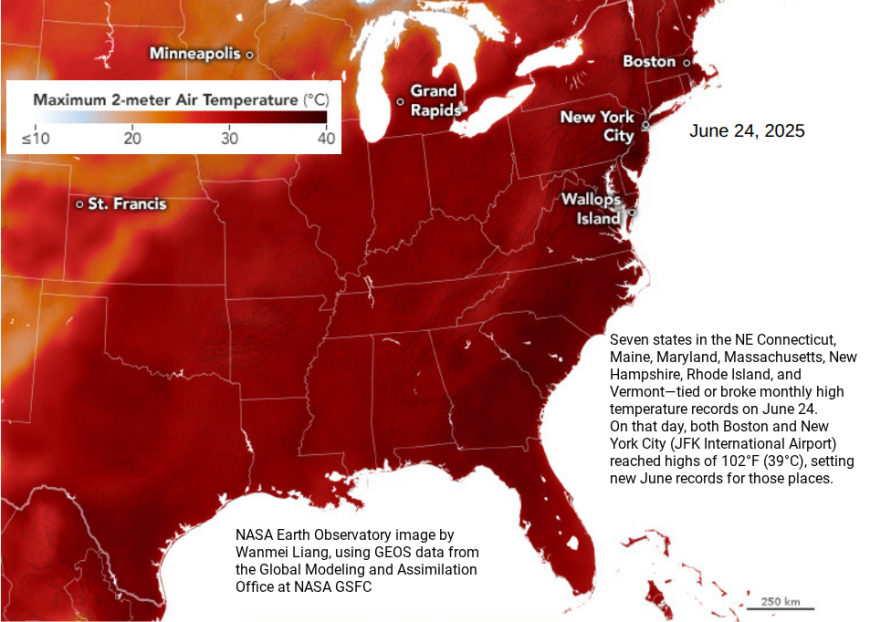
FIFPro and cooling breaks
Professional football players and their national unions are part of a global organisation FIFPro, who ensure international representation in the decisions, including improving players' working environment and overall wellbeing. This union has raised concerns about protection in the increasingly hot and humid conditions for the men’s and women’s games.
FIFPro has asked FIFA to allow cooling breaks every 15 minutes rather than just in the 30th minute of each half. There is also a push for the half-time break to be extended from 15 minutes to 20 minutes to give the players and officials enough time to recover and cool down.
The only reference to extreme weather in FIFA’s regulations refers to the use of cooling breaks. These breaks in play are implemented around the 30th and 75th minutes in cases when the wet-bulb globe temperature (WBGT; an overall thermal stress measure using temperature, humidity, wind speed and solar radiation) exceeds 32 °C on the pitch. These breaks then allow players to hydrate and use cooling measures such as ice towels lasting anything from 90 seconds to three minutes.
In the Women's Euros, FIFPro requested that half-time be extended from 15 to 20 minutes to help lower the core temperature of players in the early heat.
There is a lack of data regarding the thermal (i.e. core and skin temperature) and cardiovascular (i.e. heart rate) strain experienced by females during play in conditions that reach the threshold for implementing the FIFA cooling break heat policy.
The squeeze on available time, with more competitions and more teams in existing events, means that games are often scheduled in the hot summer months, but are also having to cope with the additional layer of global warming. Just as the winter Olympics are struggling to find locations with enough snow and ice, high temperatures and heat stress on summer participants are becoming a big issue.
In high heat and humidity, physical performance is impaired, and the players struggle to run and think clearly. There is also the risk that exertional heat illness (EHI) occurs when the body's heat production during physical activity, such as high-level football, overwhelms its ability to cool down. This can lead to a dangerous rise in core body temperature, which then leads to mild heat exhaustion or severe heatstroke.
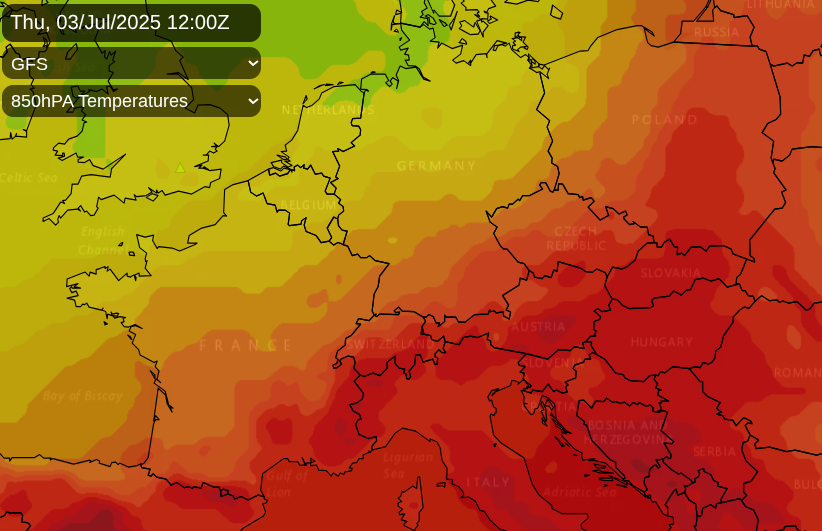
The Future
FIFA (as with other sports bodies) need to balance the participants' welfare and that of the spectators, against broadcasters, online fans and the financial investments of these huge events.
FIFPro are pushing for longer breaks, reviews of kick-off times and a discussion of the overall scheduling to protect the professional athletes as the climate changes.
It would make sense for the World Cup in the Americas to go to quarters rather than halves if heatwaves reappear in 2026. They also want to move the WBGT >32C threshold down to >28C to protect the players.
The 2019 women's World Cup in France saw temperatures greater than 38C. 2023 was in Australia, but it was winter in the southern hemisphere. The next championship will be in Brazil in June to July 2027, so not the hottest time of year there either.
The last men’s World Cup was held in Qatar, moving around the world to include the Middle East and Asia. Due to the inevitable intense heat, Qatar 2022 was the first-ever World Cup held during the Northern Hemisphere winter months, interrupting the European major leagues. And yet we have heat issues for events in Europe and the US when left to their summer months.
The Americas men’s World Cup 2026 will encounter similar problems to this year, although there are more indoor, air-conditioned stadium available, such as in Dallas and Houston. There are calls for afternoon games to be avoided altogether in New York, Kansas and Atlanta, amongst others. In Monterrey, Mexico, the heat index was close to 50C and in Miami, it was as high as 44C.
Only San Francisco and Vancouver are rated as low risk for “heat stress injury” Additionally, it will be hurricane season, which has been quiet for June 2025, luckily with significant disruption to the National Weather Service resources. FIFPro’s latest study shows that six of the 16 World Cup 2026 venues present an extremely high risk of heat-related illness, particularly due to the planned kick-off times.
A "sound, preventative concept" includes cooling breaks in the 30th and 75th minutes, the right to use five substitutions and an additional substitution if a match goes into extra time. Additionally, all teams would have a minimum of three rest days between matches to facilitate recovery.
By 2030, the World Cup will be in Spain, Portugal and Morocco. Both Spain and Portugal recently saw their hottest June days on record with 46C inland. A year or two ahead, it is not possible to say that there will definitely be a heatwave in the weeks of these championships but climate change is increasing the chance of this happening.
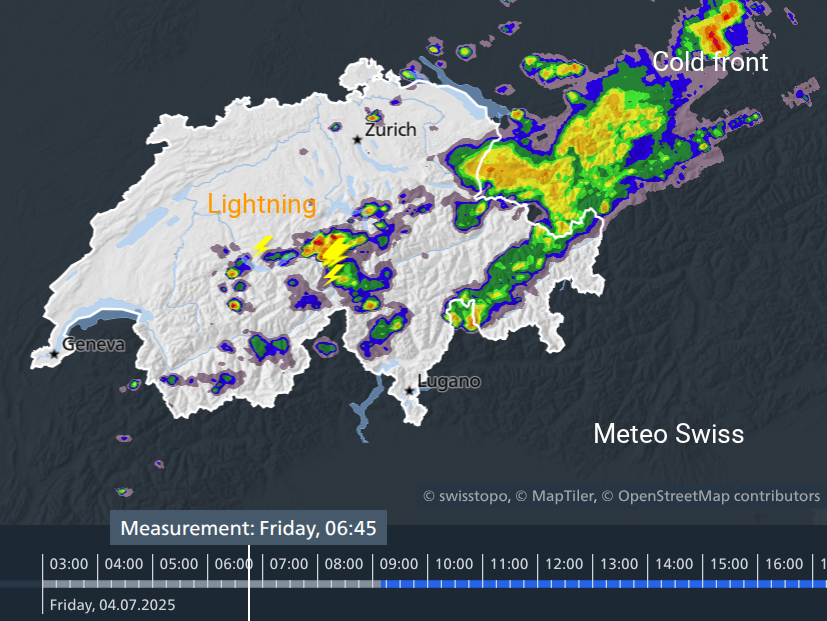
Switzerland Euros 25
There has been some rain in Switzerland early on Friday, particularly for central and northeastern areas. In the women’s Euros matches on Saturday 5th July it looks dry. Wales play the Netherlands at 5pm at Lucerne. Temperatures will be around 25C, so not as hot as it has been. France versus England at 8pm BST in Zurich (9pm local time) will feel warm at 27C with no breeze.
Loading recent activity...